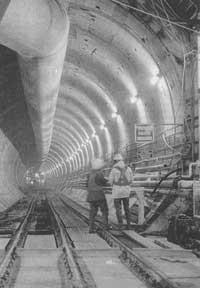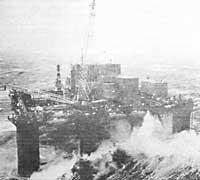Marine platforms
1987/12/01 Ferreres, Iñaki Iturria: Elhuyar aldizkaria
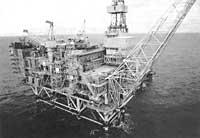
However, there are other platforms built in more serious conditions, but they all have similar problems and functions.
The marine platforms have been used since 1947 to extract the oil and natural gas in the underground field. Before this date several platforms have been built, but not as isolated structures inside the sea, but on beaches or spike ends.
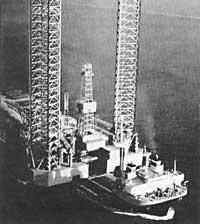
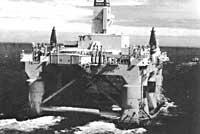
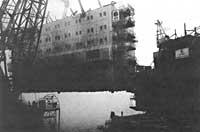
Initially, the platforms were built at small sea depths, that is, 30 m deep. More and more drilling is needed. The Cognac platform, built in 1978 in the Mexico area, had a depth of 312 m.
The platforms consist, in general, of a sturdy structure, of a bridge and other auxiliary equipment and services, and of a drilling equipment and installation.
The most important part is the structure, which must bear the weight of all equipment and installation and the influence of waves and sea currents. For example, there are estimates that a North Sea platform must withstand 100 million waves for 20 years.
The structures are strongly attached to the bottom of the sea and are flexible, so the vibration caused by the impact of the waves and the action of the wind slows the surrounding waters.
The calculation of the beams and pillars that make up the structure is very complex, as meteorological, hydrodynamic, oceanographic, geotechnical factors, etc. must be taken into account.
The bridge of the platform must have a certain height on the surface of the sea. This takes into account the height of the largest wave of this sea in the last 100 years. This is not the same in all seas. For example, in the North Sea take 32 m, in the Gulf of Mexico 25 m and in the Persian 15 m.
On the bridge, drilling equipment, oil treatment plants, cranes, power generators, public housing, etc. exist. What would dry need 5000 m 2, you have to introduce it on the platform much less. For this purpose the structure is divided into several houses and blocks.
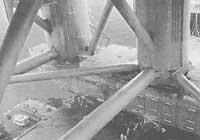
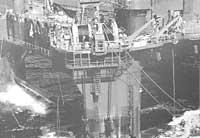
The structure of most platforms is metal mesh. There are approximately 3000 platforms with this structure. However, a few have other structures. One of the latter is the Statfjord/C platform in the North Sea. The first work done to build this platform was the basis. The base consisted of 24 cylindrical bodies.
Four of them were elongated (to place a bridge over them). The cylindrical body, full of air, moved upwards throughout the whole, and thus could be transported through the sea through several ships. Upon reaching the coke, the cylindrical bodies were filled with water and the whole set moved down leaning on the seabed.
Building deeper platforms poses big problems. However, flexible structures have managed to build platforms at 1000 m depth.
To reach the oil or gas zone more than one drilling is required. Some of them are vertical and others are made with a deviation angle.
When extraction begins after drilling is completed, the internal pressure of the pit must be kept within limits. Water or gas is injected through compressors.
Finally, the extracted oil is subtracted from its waters, carbon oxides and chlorides on the one hand and natural gas on the other. These processes are carried out on the platform itself and the products obtained are transported through pipelines and gas pipelines to the coastal deposits.
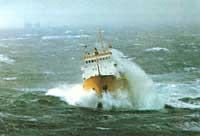
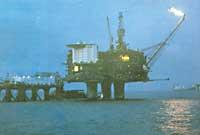
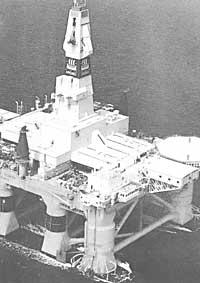
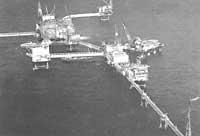
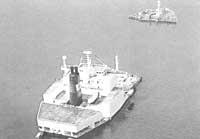

Gai honi buruzko eduki gehiago
Elhuyarrek garatutako teknologia




